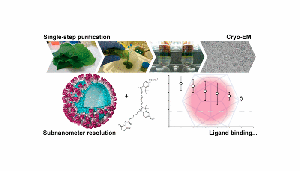 Researchers from Australia and the UK have developed virus-like nanoparticles to target and deliver drugs to cancer cells. The team’s work, which was published in the journal ACS Nano, showed that the particle could be produced in plants and that it can shuttle small molecules to cancer cells for targeted treatment.
Researchers from Australia and the UK have developed virus-like nanoparticles to target and deliver drugs to cancer cells. The team’s work, which was published in the journal ACS Nano, showed that the particle could be produced in plants and that it can shuttle small molecules to cancer cells for targeted treatment.
The team, lead by Frank Sainsbury, modeled the core protein shell, or capsid, of the Bluetongue virus. Previous work has demonstrated that the Bluetongue virus’ shell is stable, easy to produce and has a cavity big enough for small molecules or proteins to fit into.
The researchers wanted to produce the nanoparticles using plants – a method that is growing in popularity, since plants don’t carry human pathogens that could lead to possible contamination. To better understand the structure of the protein shells, the team used single particle cryo-electron microscopy and found that the plant-derived shell nanoparticles were different from the natural virus’ shells.
After the researchers understood the nanoparticles’ structure, they set out to genetically and chemically engineer the particles and load them with proteins and small molecules.
Initial testing showed that the plant-made virus particles were taken in by human breast cancer cells by binding to receptors on the affected cells. The team wrote that their findings suggest that the virus nanoparticles could be potentially used for the targeted delivery of drugs.
In December last year, researchers from the University of Utah and the University of Washington developed self-assembling nanocages that are packaged within cell membranes and exported to travel from cell to cell, delivering therapeutics. The team’s delivery system was modeled after the mechanism a virus uses to spread infectious materials among cells in a host’s body.

